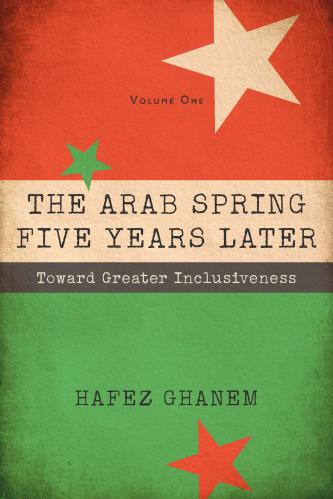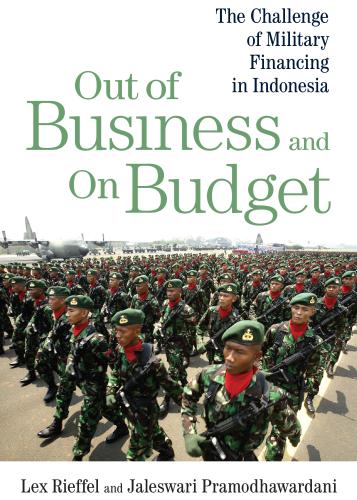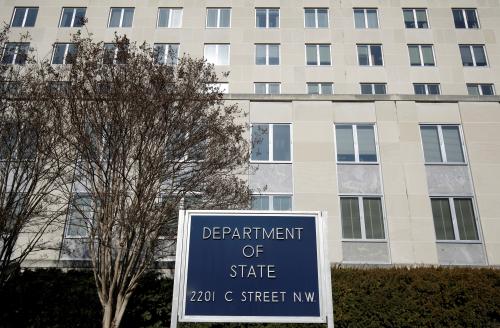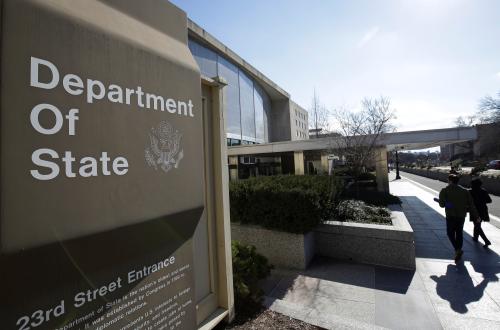July is producing a flurry of reports on ways to restructure U.S. foreign assistance in response to the administration’s call for a reorganization of government agencies. The recommendations range from a bold joining of all development and humanitarian programs into a single new agency to plans that simply adjust the current system. What they all have in common is a focus on creating clear lines of authority through streamlining and aligning common functions, as well as keeping development and diplomacy separate but well coordinate.
Secretary of State Rex Tillerson’s “Listening Report,” which surveyed the thoughts and opinions of State Department and U.S. Agency for International Development employees, should be foundational to any redesign discussions. The recommendations in the consultant’s report, and the employee views on which they are grounded, should serve as guideposts to organizational changes, since a structure that does not fit the culture of a community or serve its members will ultimately be counterproductive.
What comes through in the words of the career staff of the Department of State and USAID is that they are, first, patriots who believe deeply in America and are honored and proud to serve their country. The American people, Congress, and the Trump administration should be grateful that we have them at our service. Second, they have strong views on how their agencies should function.
Aid structure
The seven recommendations at the end of the report fall into four basic arenas. The first three recommendations—“craft a mission and framework, align according to purpose and mission, and organize to serve the frontline”—all deal with the organizational structure of the Department of State and USAID. What comes through loud and clear from the employee views is how different the cultures and functioning are of the two sister agencies. USAID employees are clear on their mission: “We partner to end extreme poverty and foster resilient, democratic societies while advancing our security and prosperity.” They express a strong sense of responsibility for programmatic results and that what happens in the field is what matters, i.e., the focus is on supporting the USAID country missions. In contrast, State employees are less certain about their mission, less driven by results, and more mixed on whether the action is at the embassy level or at headquarters. USAID employees express a strong aversion to the agency being merged with State out of concern that it will affect agency culture and effectiveness, and the employees of both agencies appear to concur that “the arrangement is most effective when development work is kept distinct from diplomacy.”
Employees from both agencies are frustrated with a lack of clear authority and unproductive processes, excessive layers of bureaucracy, redundant and onerous processes, and no single point of authority with multiple signatures required to reach a decision. In addition to their own agency’s cumbersome processes, USAID employees complain about the overlay of State Department processes and protocols that do not align with USAID functions. Employees of both agencies are frustrated with the time devoted to innumerable burdensome reports to Congress and other agencies, many of which are never read.
Human resources
A second basket involves human resources: “Treasure the talent and increase the duration of assignments and overlap.” State and USAID employees report dysfunctional HR systems that require inefficient workarounds and provide poor personnel services. They say their organizations do not take advantage of people’s work experience, education, and competencies.
This basket includes a handful of targeted recommendations. The one that is most strategic is to “upgrade policies for a 21st century workforce.” This gets to the crux of the matter. Both agencies have poorly functioning 20th century HR systems. USAID is in the midst of a multi-year process of upgrading its personnel system. That is fine, but what is required is not an upgrade, but a redesign, starting from scratch to build an HR system for each agency that fits its mission and today’s workforce dynamics. Their personnel requirements differ; USAID has greater need for sector experts with deep knowledge and experience and State for foreign affairs generalist, and USAID employs local staff with specific technical expertise that help manage programs, whereas State’s local staff are more in support positions.
Current government processes restrain any action on this front. What is needed is a blue-sky approach from individuals who understand public administration and can tap into cutting edge HR practices outside of government. One option is to request the National Academy of Public Administration to outline the key elements of a fit-for-purpose personnel system for each agency.
Shared services
The third category of the recommendations is to “build a shared services model.” This is an area with a long history, some of it is not at all constructive and requires a careful, in-depth, item-by-item analysis of where and how shared services are not just efficient but also effective for both agencies.
- Sharing security clearances among agencies. This recommendation should be implemented immediately. It is inefficient and unnecessary to require new time-consuming security clearance when an employee moves from one foreign affairs agency to another.
- Sharing human resources. Facilitating the ability of State, USAID, and other agency employees to move between agencies is another constructive idea. Required by the provision of law referred to as Goldwater-Nichols, the military requires a stint in another service for senior advancement. The civil side of international affairs needs to adapt this practice and bring the military into the exchange.
- Sharing information technology. State and USAID have some common but also different data and IT requirements, so any IT reforms should be approached carefully. State has a much greater need for secure systems, whereas USAID uses considerably more open source information that requires an internet-based platform. USAID has greater use of and generates much more data. USAID is currently in the process of implementing a complex IT integration, entitled Development Information Solutions, which will allow its multiple systems to work together for better data management. This system should be implemented and not disrupted. State’s systems are antiquated and in serious need of investment.
- Share other planning, budgeting, finance, procurement, and administrative functions. Again, any changes to these functions should carefully consider past experiences. Some functions can be shared, but others have different requirements that are unique to each agency. Remember, efficiency does not always lead to effectiveness and can actually disrupt effectiveness.
- Move issuance of passports, visas, etc. to Homeland Security. A group of former State Departments officials have articulated the problem with this suggestion.
Ending the disruption
The final recommendation: “Remove the uncertainty of cuts as soon as possible.” Hear, Hear! In addition, I would add remove as soon as possible the companion threats of personnel reductions and moving organizational boxes. The administration’s budget proposal of reducing the international affairs budget account by nearly one-third has been incredibly disruptive, both to employee morale and to relations with partner countries. One day a partner government official receives word that U.S. aid funding is to be reduced or eliminated; the next day the word is Congress will not let that happen. Suddenly, that partner’s confidence in the U.S. as a dependable partner is broken. The administration needs to build its future budget requests and instructions to the field on what one can expect Congress to support, rather than telling agencies to base their actions on the unrealistic fiscal year 2018 budget request.
To close with a telling line from the report:
To enable people at the Department of State and USAID to provide their best contribution to the United States, particularly during what is expected to be an enterprise transformation, it is imperative that the future they are working towards empowers, inspires, and challenges them.










Commentary
State Department and USAID employee survey shows how to redesign US foreign aid
July 31, 2017